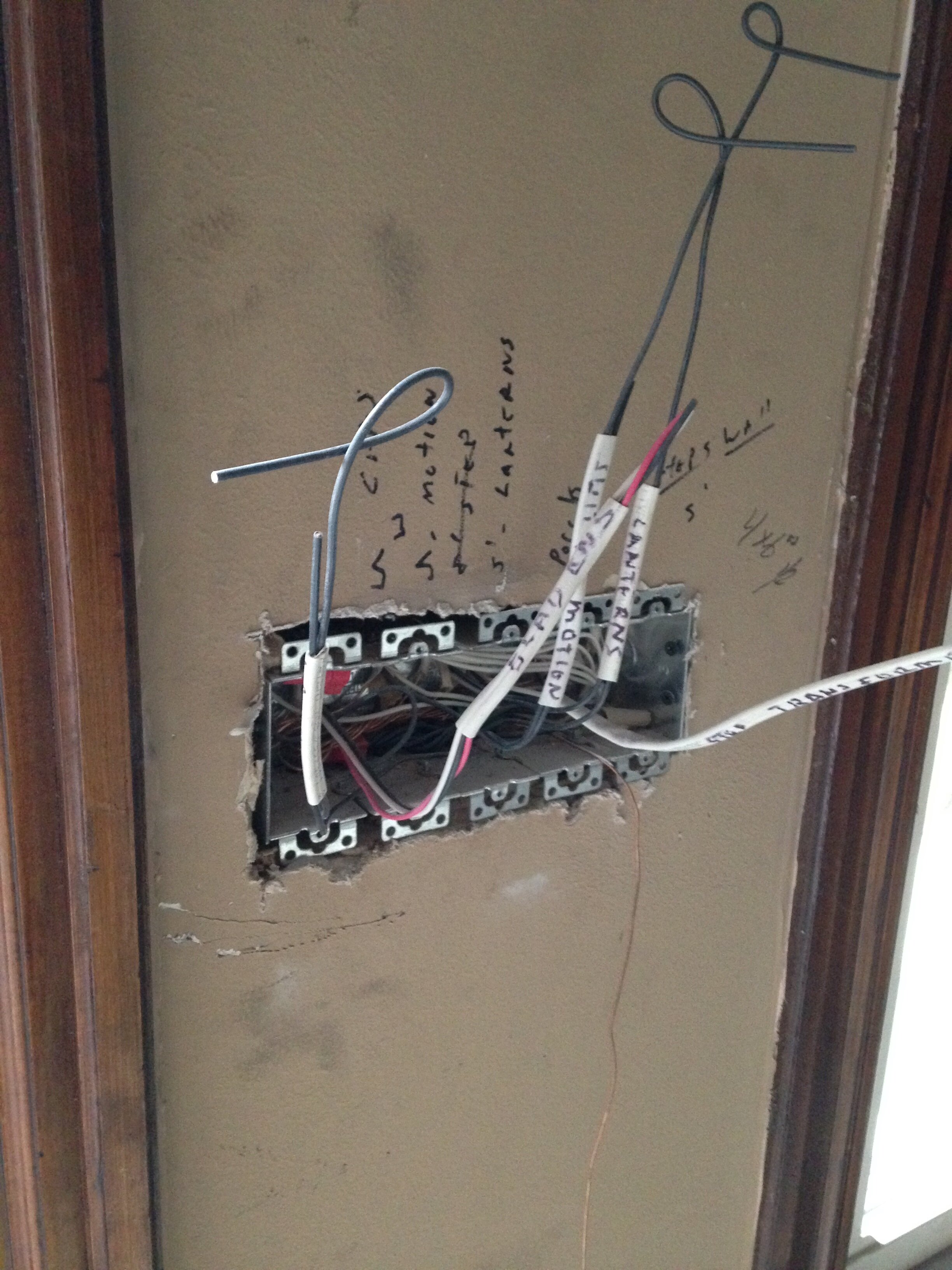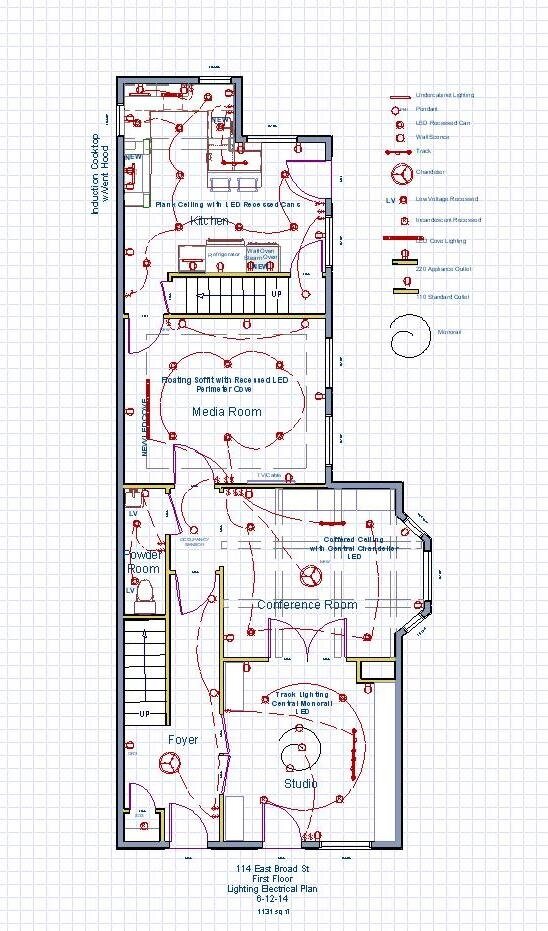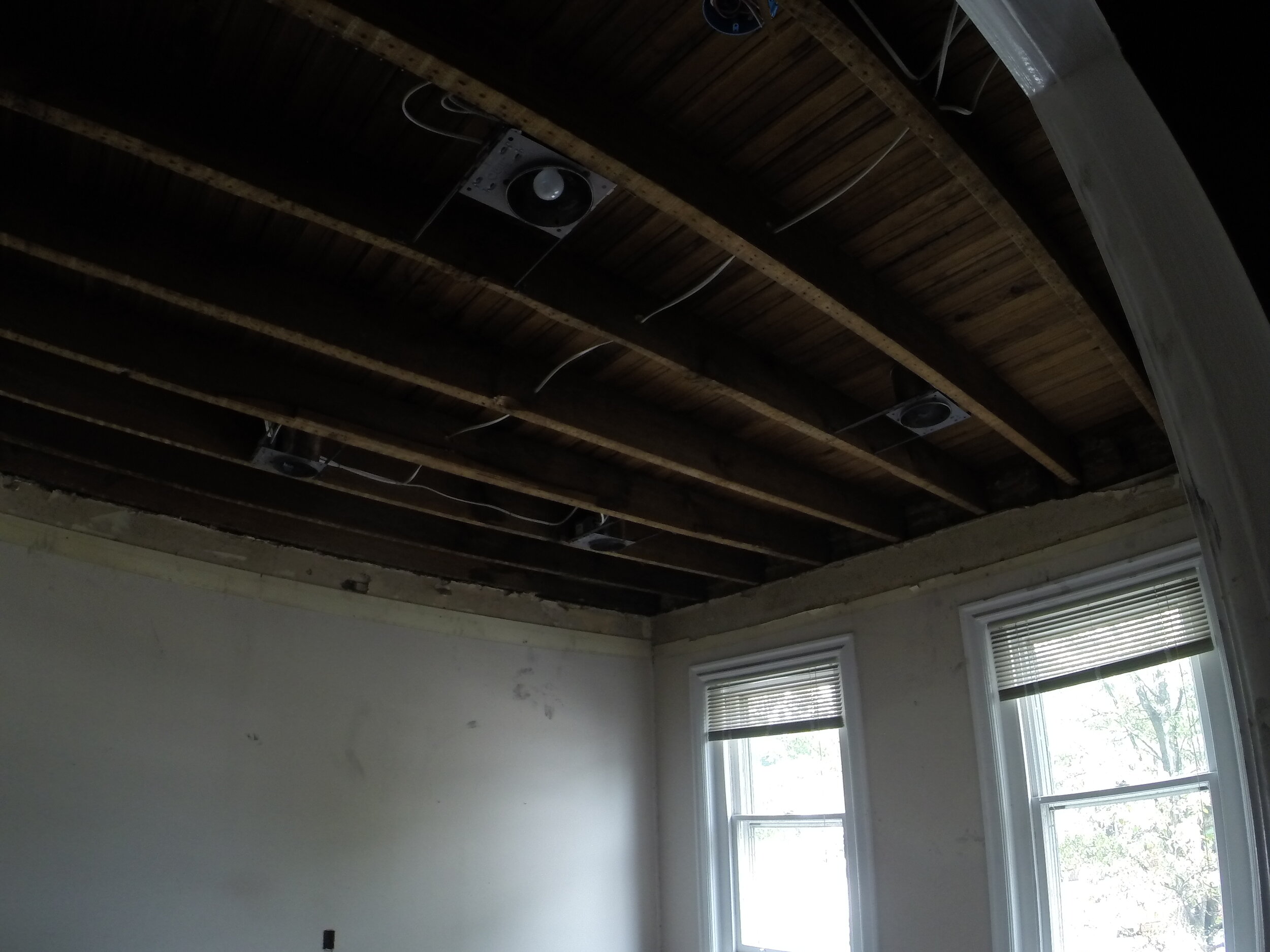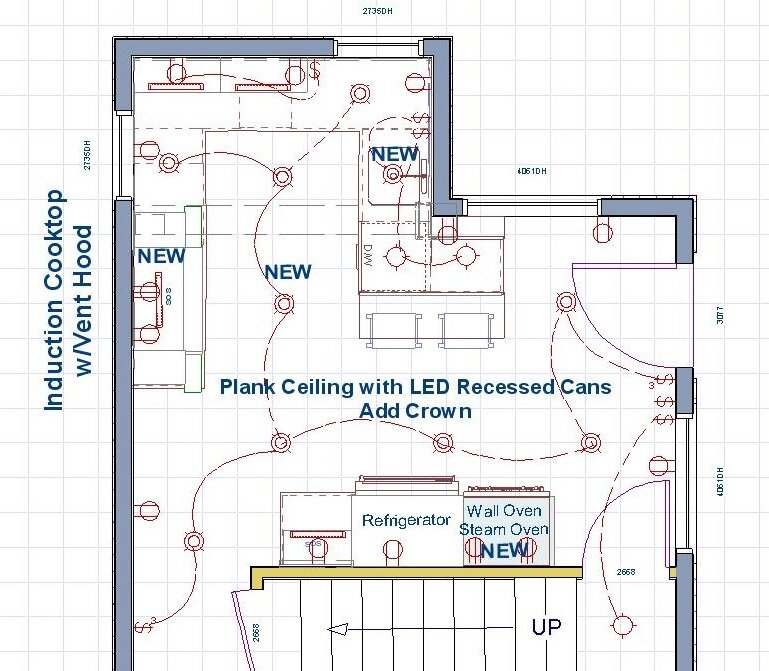Lighting Design in a 115-Year-Old Home
“They don’t make it like they used to!” It’s a phrase we hear all too often. But when it comes to old homes and interior lighting – that’s a good thing! From the moment that we took down our first drop ceiling tile installed by the previous owners, I knew that a good portion of our budget was going to be spent on improving the lighting throughout the property. Because there were so many holes in the original plaster ceilings we decided to demo ALL of them. This made sense not only in terms of costly plaster repair – but in terms of needing to replace all the old-knob and tube wiring.
As a professional interior designer, I know better than most the importance of good lighting design. And since my plan was to use our 1905 historic property as my home AND my interior design studio I was thrilled with the chance to use each room to demonstrate lighting improvements. Another important aspect is that the property is located within a small city – basically a row house. So although it is a stand-alone structure, the house is only 22 feet wide (at its widest point) and has only a few windows on the sides where there are only a few feet between buildings. Without the benefits of a lot of natural light – our house is very dark inside.
So I approached our interior lighting design as I would my clients’ homes. I looked at the functionality of each space AND the furniture layout. In this way, I could layout recessed lighting and ceiling-mount fixtures, as well as wall sconces. (For more information on layered lighting check out my Lighting Basics Blog and Video.)
A successful lighting plan also involves lighting controls – so I made sure to note the location of switches on the lighting plan, as well as which fixtures would be controlled by each switch. Where there were multiple switches at one location I made a point to note the order of each switch as it made sense for each bank of controls. Dimming controls are important to consider, as is planning ahead which lights need to be controlled from multiple locations.
If you don’t have the benefit of working with a professional interior designer make certain that you sit down with your electrician to review all these important factors. Don’t just assume that your electrician understands your specific needs - having a documented lighting plan makes the job easier for everyone involved and will ensure good results!




